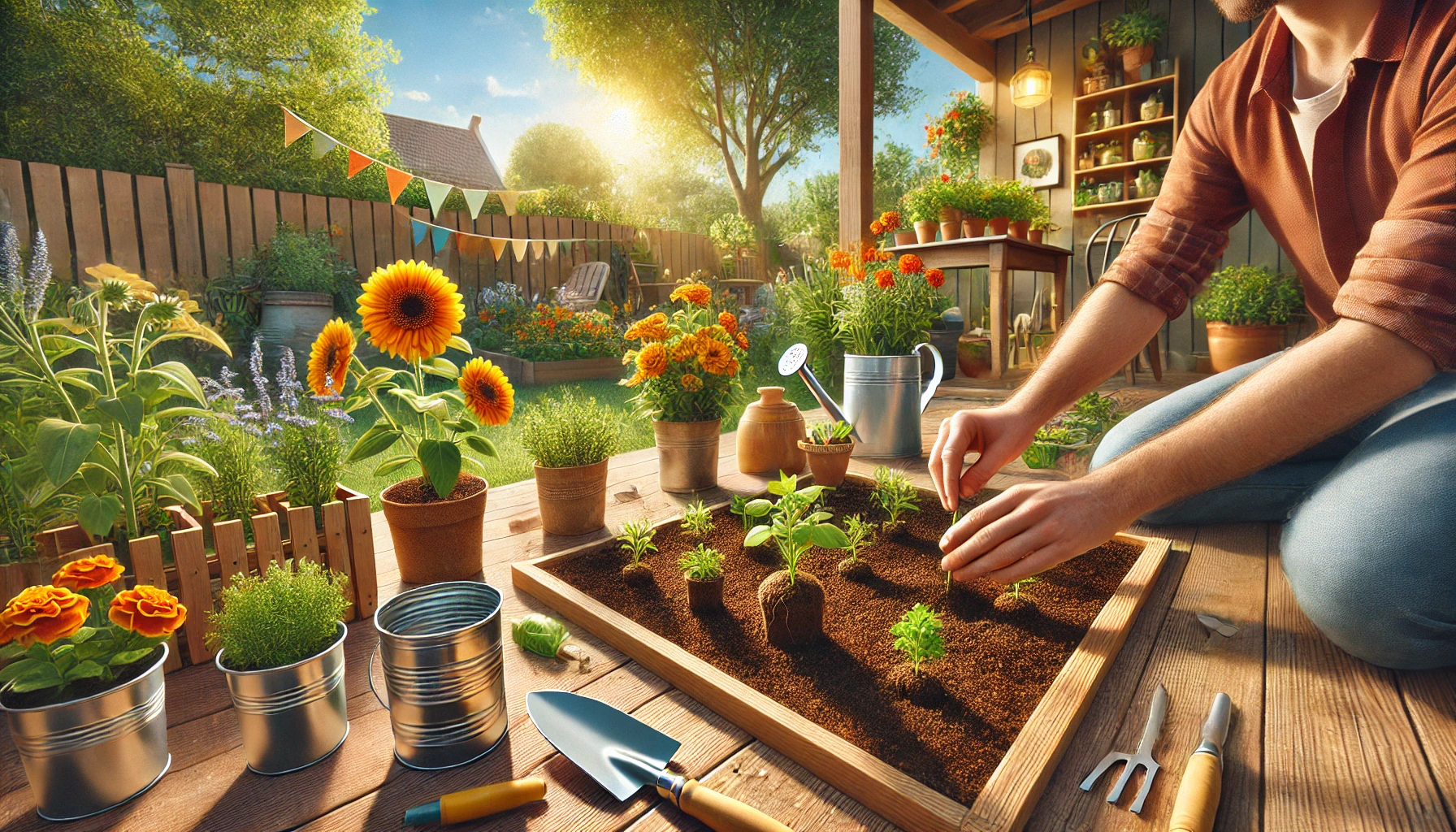Starting a garden is a rewarding experience that brings beauty, sustainability, and tranquility to any space. If you’re new to gardening and unsure of where to begin, this guide will walk you through the essential steps to create your first garden with confidence and success.
Why Start Your Own Garden?
Before diving into the process, it’s helpful to understand the many benefits of gardening:
- Improved well-being: Gardening reduces stress and enhances mental health.
- Enhanced aesthetics: A well-maintained garden adds beauty and charm to your surroundings.
- Eco-friendly lifestyle: Growing your own plants contributes to environmental sustainability.
- Homegrown produce: Enjoy fresh herbs, vegetables, or flowers straight from your garden.
Ready to get started? Let’s begin!
1. Choosing the Perfect Location
The success of your garden depends largely on where you plant it. Consider these factors when selecting a spot:
- Sunlight: Most plants require 4 to 8 hours of direct sunlight daily. Observe your space to identify areas with sufficient light.
- Space: Gardens can be as small as a few pots on a balcony or as large as a backyard plot.
- Drainage: Avoid areas prone to waterlogging. Proper drainage is crucial for healthy plants.
2. Determining the Type of Garden
The type of garden you create depends on your goals and preferences. Some options include:
- Flower garden: Ideal for beautifying your space with colorful blooms.
- Vegetable garden: Perfect for growing your own food and herbs.
- Succulent garden: A low-maintenance option for busy gardeners.
- Mixed garden: Combines flowers, herbs, and vegetables for a versatile approach.
3. Preparing the Soil
Healthy soil is the foundation of any successful garden. Here’s how to prepare it:
- Clear the area: Remove weeds, rocks, and debris from the selected site.
- Aerate the soil: Loosen the soil with a garden fork or tiller to improve air circulation and root penetration.
- Add organic matter: Incorporate compost or organic fertilizer to enrich the soil with nutrients.
Tip: For container gardening, use high-quality potting soil tailored to your chosen plants.
4. Selecting the Right Plants
Choosing plants that suit your garden’s conditions and your level of experience is key. Here’s how to decide:
- Climate: Research plants that thrive in your region’s climate and weather patterns.
- Maintenance needs: Opt for low-maintenance plants if you’re a beginner.
- Personal preference: Select plants you love, whether they’re fragrant flowers or practical vegetables.
Some beginner-friendly options include marigolds, sunflowers, basil, and lettuce.
5. Planting Your Garden
Once you’ve prepared the soil and chosen your plants, it’s time to start planting:
- Follow spacing guidelines: Refer to plant labels or seed packets for proper spacing.
- Dig planting holes: Ensure they are deep enough to accommodate the roots.
- Plant with care: Place plants in the holes and gently cover the roots with soil.
- Water thoroughly: Hydrate your garden immediately after planting.
6. Caring for Your Garden
Consistent care is essential to keep your garden thriving. Focus on these basics:
- Watering: Regularly water your plants, adjusting the frequency based on their needs and weather conditions.
- Weeding: Remove weeds frequently to prevent competition for nutrients.
- Mulching: Add a layer of mulch to retain soil moisture and regulate temperature.
- Fertilizing: Feed your plants periodically with organic or synthetic fertilizers.
7. Monitoring and Adjusting
Gardening is a continuous learning process. Observe your plants regularly to spot any issues like pests, diseases, or nutrient deficiencies. Adjust your care routine as needed to maintain a healthy garden.
Reaping the Rewards
As your garden flourishes, you’ll enjoy the fruits of your labor—whether it’s vibrant flowers, fresh vegetables, or a serene green space. Gardening is not only a hobby but also a way to connect with nature and bring life to your surroundings.
Start your garden today and experience the joy of nurturing your very own patch of greenery!
